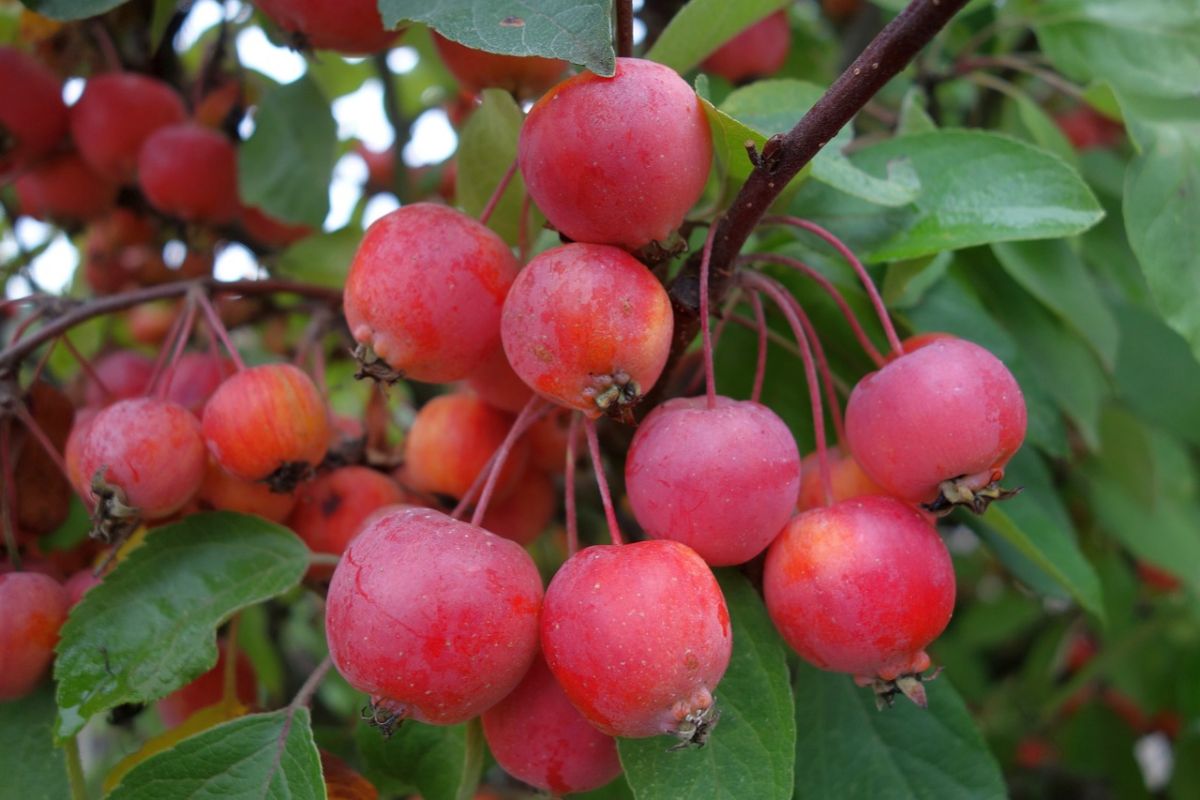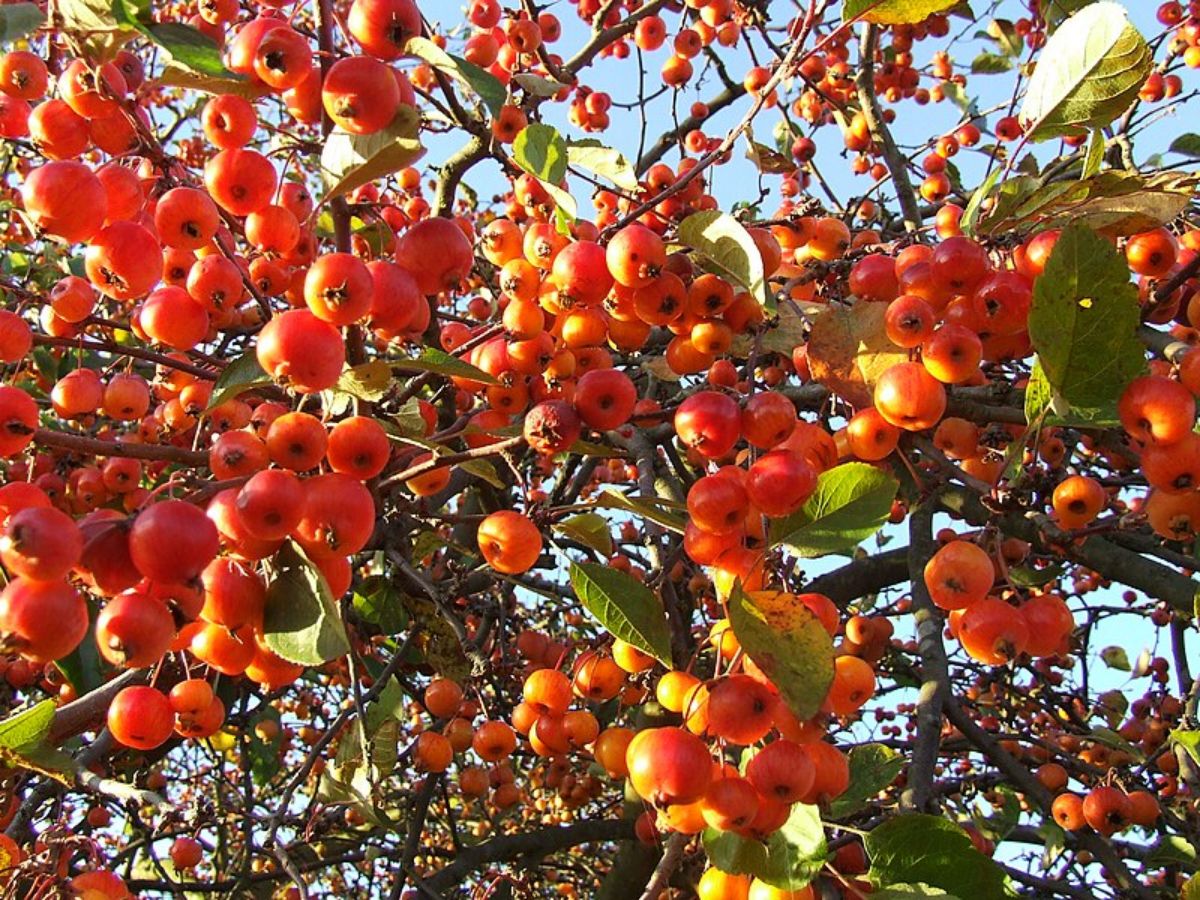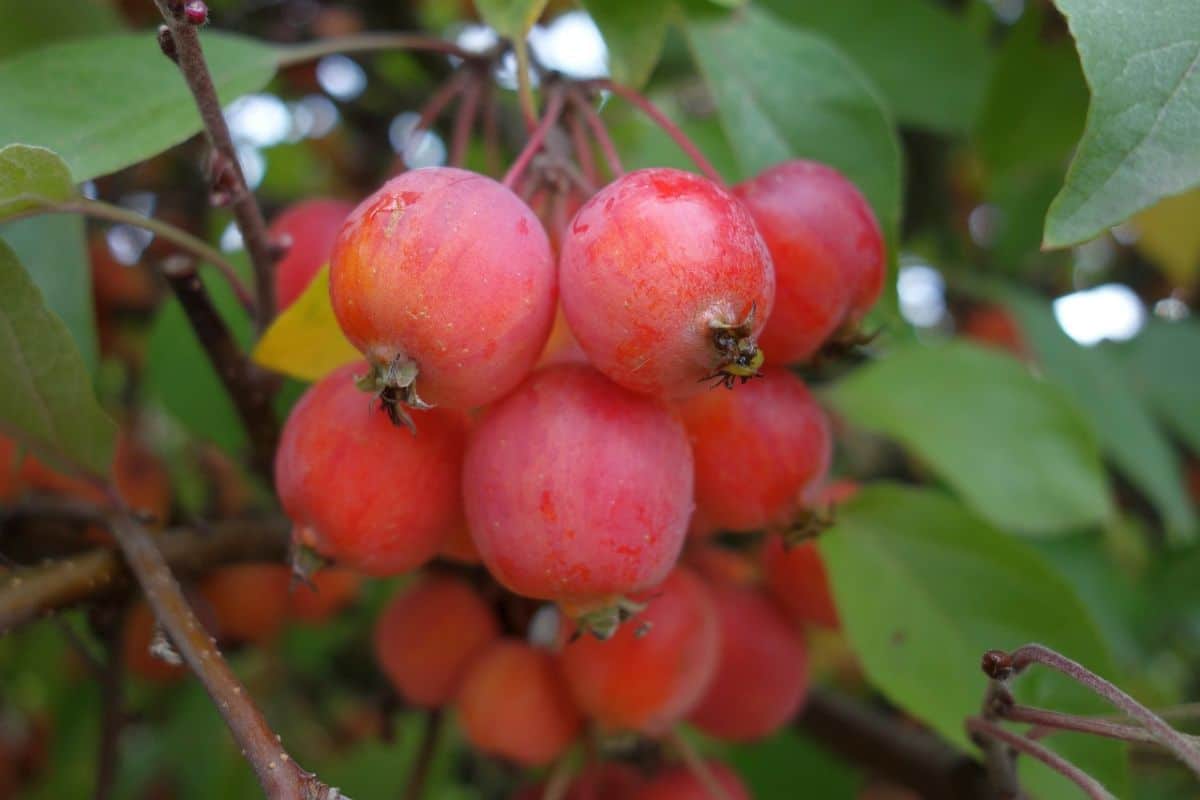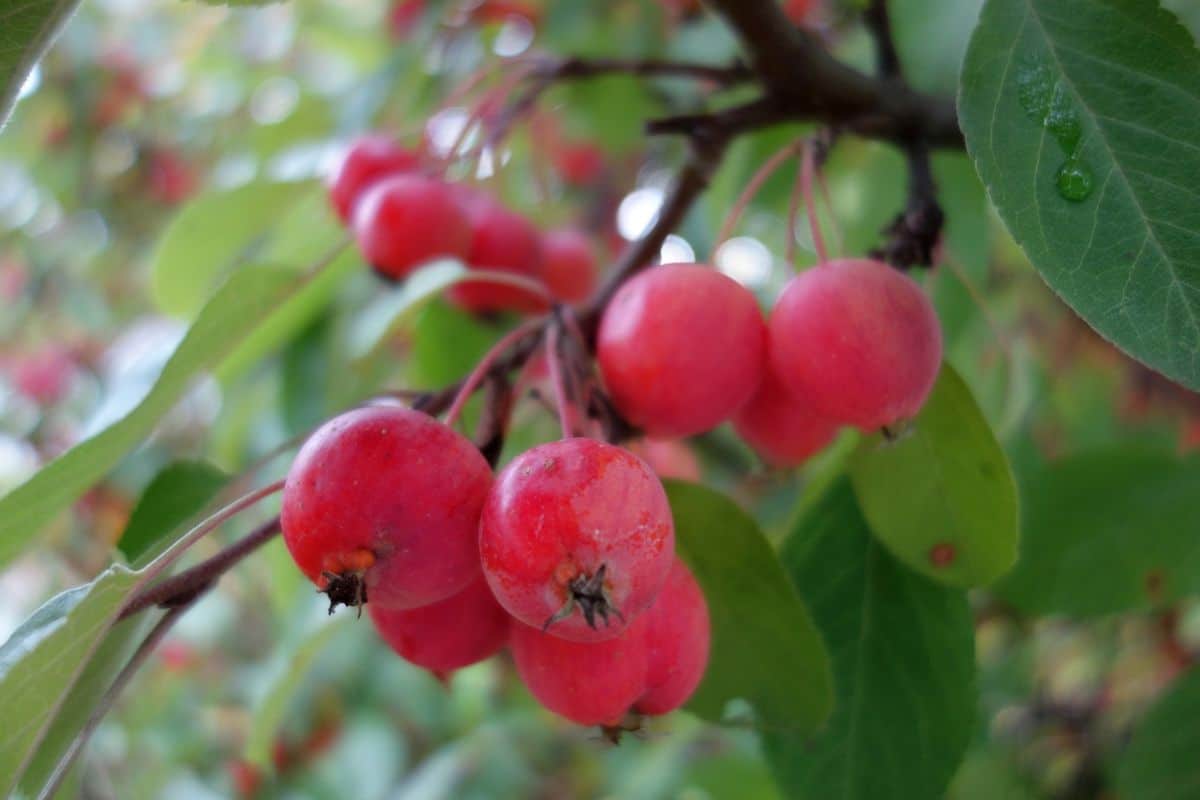
One of the varieties of apple tree that is mainly used in bonsai for its decorative style is the Malus everest. It is a curious type of apple tree that you can have either as a mini tree or as a normal tree. But how are you? What care do you need?
If you want to know more about the Malus everest and the care it would need if you had it (whether in bonsai or as a fruit tree in a pot or in the garden), take a look at what we have prepared for you.
Contents
How is the malus everest

Known as the false apple tree, Malus everest is one of the varieties of fruit trees whose objective is not so much production as decorative style. It is a tree that can easily reach six or eight meters in length. It has a flared, fan-shaped or wide pyramidal shape that can reach six meters in width.
As for the leaves, they are dark green. It is a deciduous tree, each leaf being between eight and twelve centimeters long. This, yes, Being deciduous, it is normal that in autumn they take on an orange-yellow color before falling..
Along with the leaves, it’s the flowers that grab your attention the most. These usually appear in mid-spring, small white flowers, quite numerous, which have red buds. After them would come the fruits, small, somewhat flattened apple balls that are usually red, but can be green or even yellow.. Of course, it is normal that these apples, which can measure about two or two and a half centimeters in diameter, are used more to make jams than to eat them directly.
And it is that these apples are quite spicy and astringent, so only those who like such a strong flavor would eat them.
We cannot tell you that it will give you an abundant production of apples, but you will have a few each year, to be harvested around autumn.
malus everest treatment

Now that you know the Malus everest a little better, it’s time to get started. That is, to give you advice so that you can take care of it at home. It doesn’t matter if you have it in a pot, in a bonsai or planted directly in the ground. The support, except particularities, will be the same. And what are they? We tell you.
location and temperature
The first thing you need to know is where to put your Malus Everest. And it will depend on how you have it. If it is in a pot, you can put it on the balcony, the terrace, the patio… We recommend a partial exposure, that is to say in partial shade because it is a tree that does not support the sun (nor the heat) very well. For that, To plant it in the garden, it is best to place it in a partially shaded spot. As long as you make sure there is sun first in the morning and last in the afternoon, that will be more than enough.
Now, if the climate where you are tends to be cool, and the sun does not get too hot, you can encourage yourself to place it in full sun.
As for the temperature, the truth is that, unlike other plants, this one resists frost very well down to -20ºC. But the heat supports it less well, especially if it is too hot (you can stop the tree and leave the fruits half cooked before throwing them away).
Substrate
Regarding the soil, the Malus everest is a tree that needs a soil rich in nutrients and which supports humidity well. That is why our recommendation is to make a mixture with peat, universal substrate, sand and another drainage, such as perlite or similar. Also, when planting or transplanting, you must add a little mineral fertilizer so that it takes root much more quickly.
You will need to transplant it approximately every two years, always at the end of winter and the beginning of summer. And, if possible, before it begins to germinate.
Irrigation

Irrigation is one of the most important care of this plant. Because, if you go too far, you will form a puddle and there will be a greater likelihood that mushrooms will appear which can make you sick or even worse, kill you. And if you water too little, the tree will stop and could die (besides it won’t flower well and bear fruit).
For this reason, and depending on the environment, the climate… you will have to set up suitable irrigation. But, generally speaking, we can tell you that it is usually watered two to three times a week in the summer (more if it is very hot), and once or twice in the winter.
Of course, when it comes to doing so, Avoid water falling on the flowers as much as possible because the only thing that will achieve is that they rot.
Subscriber
Malus Everest fertilization is only carried out from spring to autumn. You can apply two types: on the one hand, a liquid with irrigation water; and on the other long-term (at the beginning of spring and we forget it until the following year).
Now it will all depend on the type of tree you have, whether it is taller or smaller.
Plagues and diseases
Although this plant is quite resistant to the pests that usually affect apple trees, it should not be rested on its laurels either, as they can attack it. Above all, what will affect you the most will not be so much pests, but diseases, especially scab and mildew.. In case they affect you, the best thing to do is to treat them as soon as possible, and warn if you have others around you.
Multiplication
We end with the spread of Malus everest. You have two ways to do this:
- Through the seeds. These will take time to sprout and grow, but you will be able to see the evolution of the tree since it was born from one of them.
- By cuttings. It’s a little faster, but not for everyone. You have to know how to do it and also have patience so that it takes root and then grows without dying along the way.
As you will have understood, the Malus everest is not so complicated to have at home. You just have to comply with the care you need. Do you have any doubts? Do you have any in your garden?
